|
|
Contextual Learning Portal Youth Curators: A Team Approach to Creating Exhibitions
Basics- Project TitleYouth Curators: A Team Approach to Creating Exhibitions
- ThemeTeam Approach, Civic Literacy, Universal Design
- Submitted ByMarilyn Mcarthur, Sheila Damkoehler, Jeremy Rogers
- OrganizationFrontier Regional High School/Pocumtuck Valley Memorial Association Partnership
- Brief DescriptionTeens consult with a local or regional museum to create a new exhibit in a public space on a topic of public concern
- Materials / ResourcesReproductions of museum images (photographs, paintings, etc.); supplies for exhibit labels
- Team membersHigh School Classroom Teacher(s); Students; Museum Outreach Staff; Staff of Public Venue; other school and business partners
- Technical support neededGraphic Design, Printing and possibly New Media Technology
Key Questions- Key QuestionsHow do museums actually make an exhibit? How can an exhibit be designed to engage a wide variety of people? In our case, how can students contribute to the development of an off-site exhibit--focused on the land--in order to enrich the experience for all exhibit visitors.
- Connections: How or why was this topic identified? Why is it meaningful?Museums, especially history museums, find the teen audience elusive. How can we appeal to and engage this age group and their families? Within a very short time, they will be the adult decision-makers in our society. Their interest--and their voice--is vital to museums.
- Background Research: What resources were used to find background information for this project?The American Association of Museums‘ articles, "Dude, Where`s My Museum? Inviting Teens to Transform Museums" by Deborah F. Schwartz; and "Beyond Big and Awesome: Outcome-Based Evaluation" by Stephen Weil; and the book, "Exhibit Labels" by Beverly Serrell.
-
Web Link: http://www.aam-us.org/pubs/mn/MN_SO05_teenagers.cfm Web Link: http://www.aam-us.org/pubs/mn/MN_ND03_OutcomeBased.cfm Web Link: http://books.google.com/books?id=wgKGCj63YiwC&pg=PA1&lpg=PA1&dq=Beverly+Serrell,+the+big+idea&source=bl&ots=VMP8VqyDGE&sig=N0rb6aU-h7zY4p31s_DN4jizloc&hl=en&ei=ooAySqTtK6O_twfukqGyCQ&sa=X&oi=book_result&ct=result&resnum=8#PPR17,M1 - Outcomes: What was the outcome? How was it shared or applied in the community?The outcome was a well-attended and very well-received and family-friendly exhibit at an off-site venue (during the months that Memorial Hall Museum is closed), generating new audiences for both the museum and the partnering organization (Great Falls Discovery Center in Turners Falls), as well as an appreciation for the relevance of the topic and the beauty of the work exhibited (which included museum reproductions, works by current local artists, and student artwork). A lively reception was reviewed by the Publisher Emeritus of the local paper.
Units / Activities - Day 1:
Classroom
(1 hour)Museum staff visits classroom to introduce the project, inviting students` participation and explaining how the museum values their opinions--their voice.http://www.aam-us.org/pubs/mn/MN_SO05_teenagers.cfm
-
Web Link: http://www.aam-us.org/pubs/mn/MN_SO05_teenagers.cfm - Day 2:
Field Trip
(one long block)Team visits museum together and views the current exhibits; the team then discusses the challenge of making museums interesting and fun for students their age, and the bigger challenge of designing compelling exhibits for a wide range of visitors; the team studies the mission statements of both the museum and the public site where the Team Curated exhibit will be installed, as that exhibit must serve both missions.
- Day 3:
Field Trip
(one long block)Team visits the off-site venue. The project begins to feel "real" as students start imagining various uses of the space. Students are asked to think of one "compelling exhibit" they have experienced to bring to the next class discussion.
-
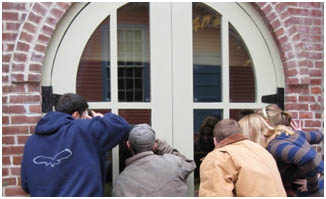
- Day 4:
Classroom
(1 hour or more)Museum staff returns to classroom to hear the students` stories of compelling exhibits they have experienced. What made those exhibits compelling? Why were other exhibits not? Stephen Weil`s article comparing a museum to a button factory is shared with students. How do we create an exhibit that "matters?"
-
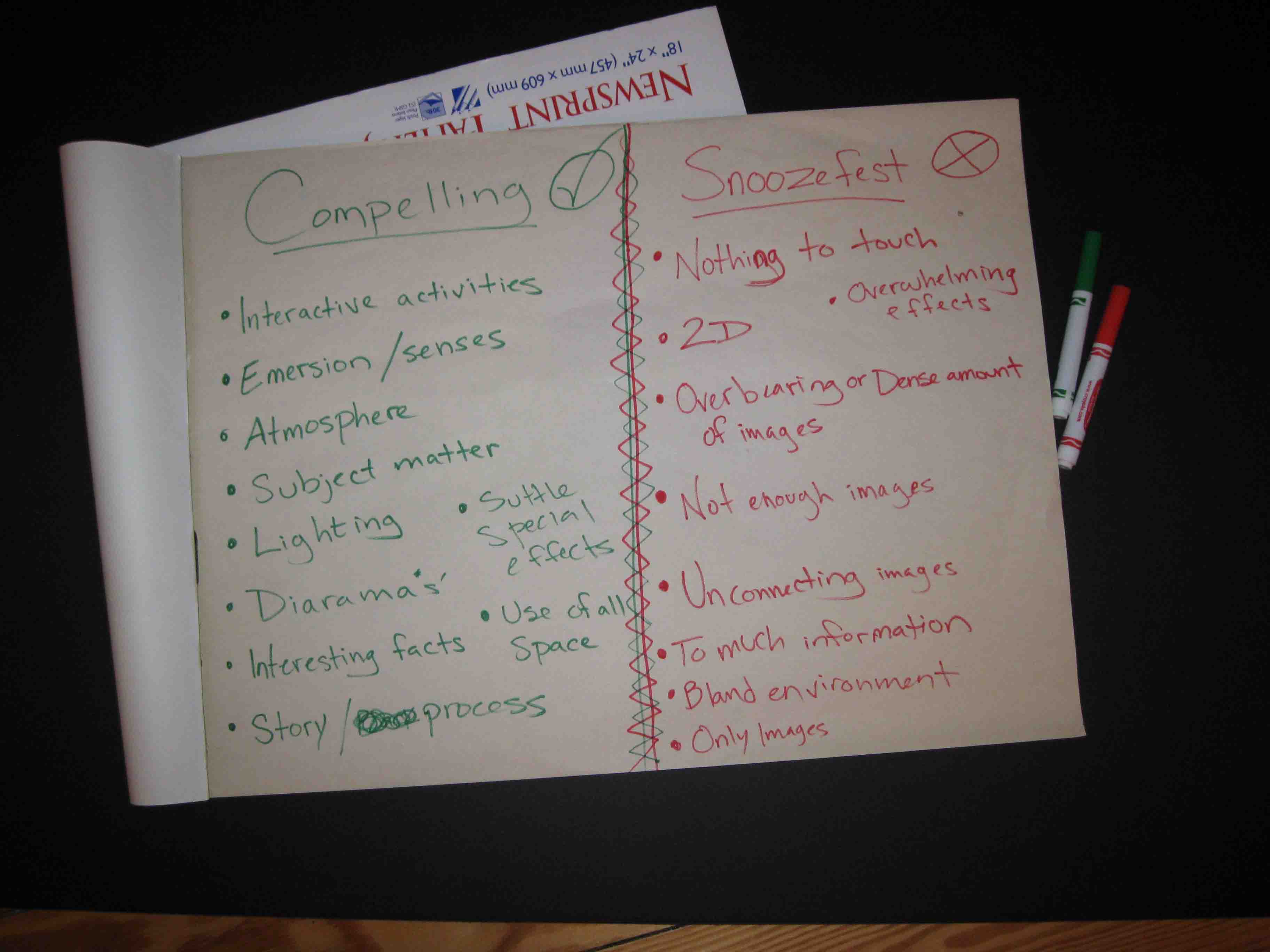
Web Link: http://www.aam-us.org/pubs/mn/MN_ND03_OutcomeBased.cfm - Day 5:
Classroom
(1 hour or more)Class discusses the mission statements and elements of the exhibit that have already been decided on by the museum, i.e.. the basic theme and objects available, as well as the limitations (i.e.. must use reproductions, limited funds, etc.). Who is our intended audience? The concept of a "Big Idea" is introduced.
-
Web Link: http://books.google.com/books?id=wgKGCj63YiwC&pg=PA1&lpg=PA1&dq=Beverly+Serrell,+the+big+idea&source=bl&ots=VMP8VqyDGE&sig=N0rb6aU-h7zY4p31s_DN4jizloc&hl=en&ei=ooAySqTtK6O_twfukqGyCQ&sa=X&oi=book_result&ct=result&resnum=8#PPR17,M1 - Day 6:
Classroom
(1 hour or more)Students begin brainstorming to determine the Big Idea. This statement will guide the work that follows. Everything that is included or not included in the exhibit will be determined by this guiding focus. This process can be tedious, but provides an opportunity for the team to debate the issues and air their opinions. Students are introduced to the Association of Museums` "Standards for Museum Exhibitions and Indicators of Excellence."
-
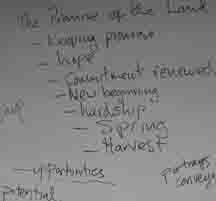
Web Link: http://www.curcom.org/exhib_standards.pdf - Day 7:
On-line Day 6 may extend into other classroom sessions and/or communication via email while ideas are bounced back and forth between museum staff, teacher and students as the museum staff develops an exhibition plan proposal.
- Day 8:
Classroom
(1 hour or more)Museum staff presents exhibition plan proposal to students based on their input: the Big Idea, content, layout and hands-on interactive ideas. Students voice approval or disapproval, suggest modifications, and a final consensus is arrived at. Designing a postcard/invite is discussed as students are invited to bring examples of good and bad design to the next class.
- Day 9:
Classroom
(1 hour)Museum staff lays out many examples of postcards and flyers on a large table. Students each choose one they like and one they don`t like and two groupings are analyzed. Why do we like the ones we like? What`s wrong with the others? The team discusses the importance of marketing and getting our message across effectively. Students are assigned the task of designing a postcard mock-up, which the teacher collects and gives to the museum staff for review.
-
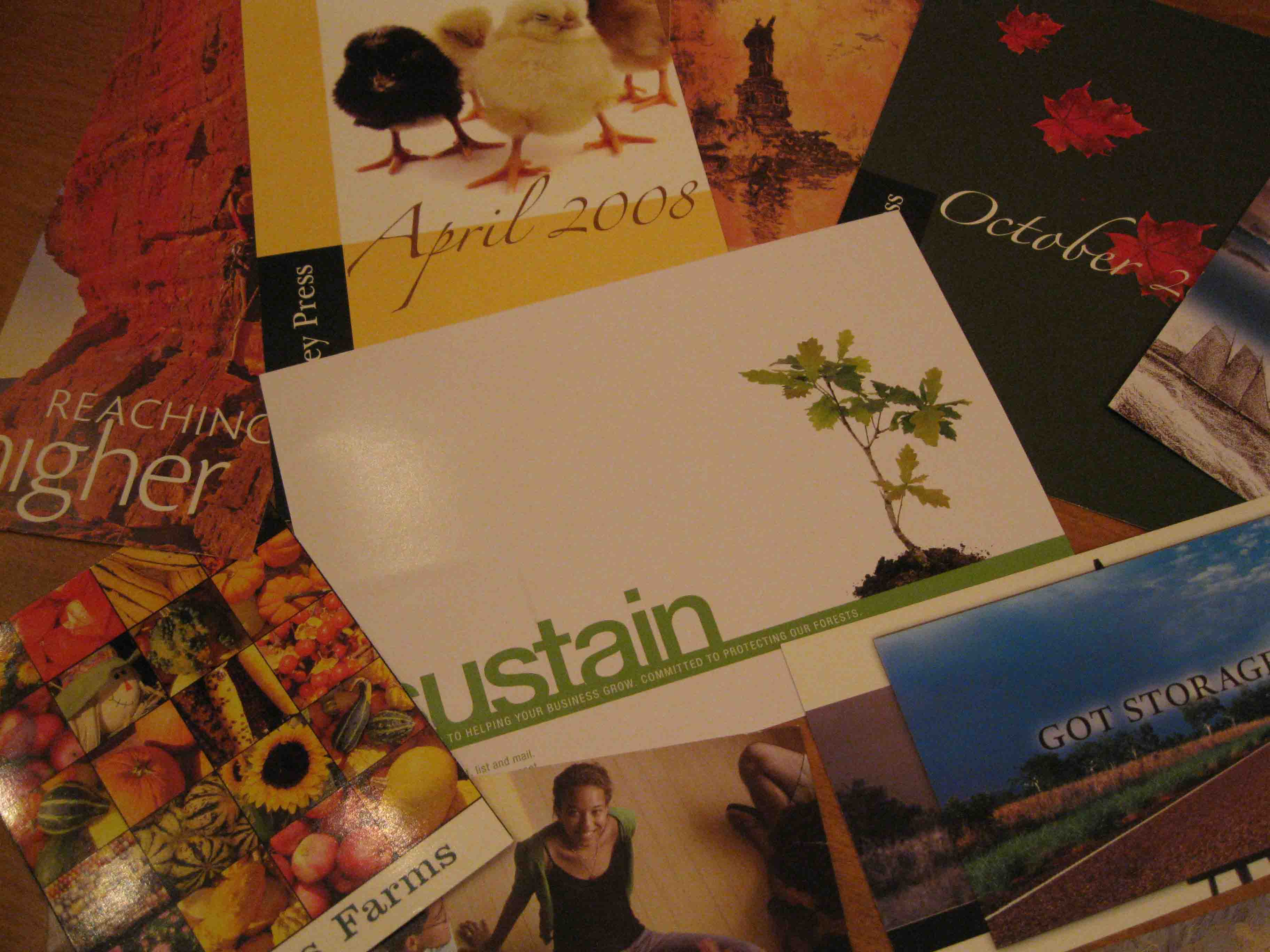 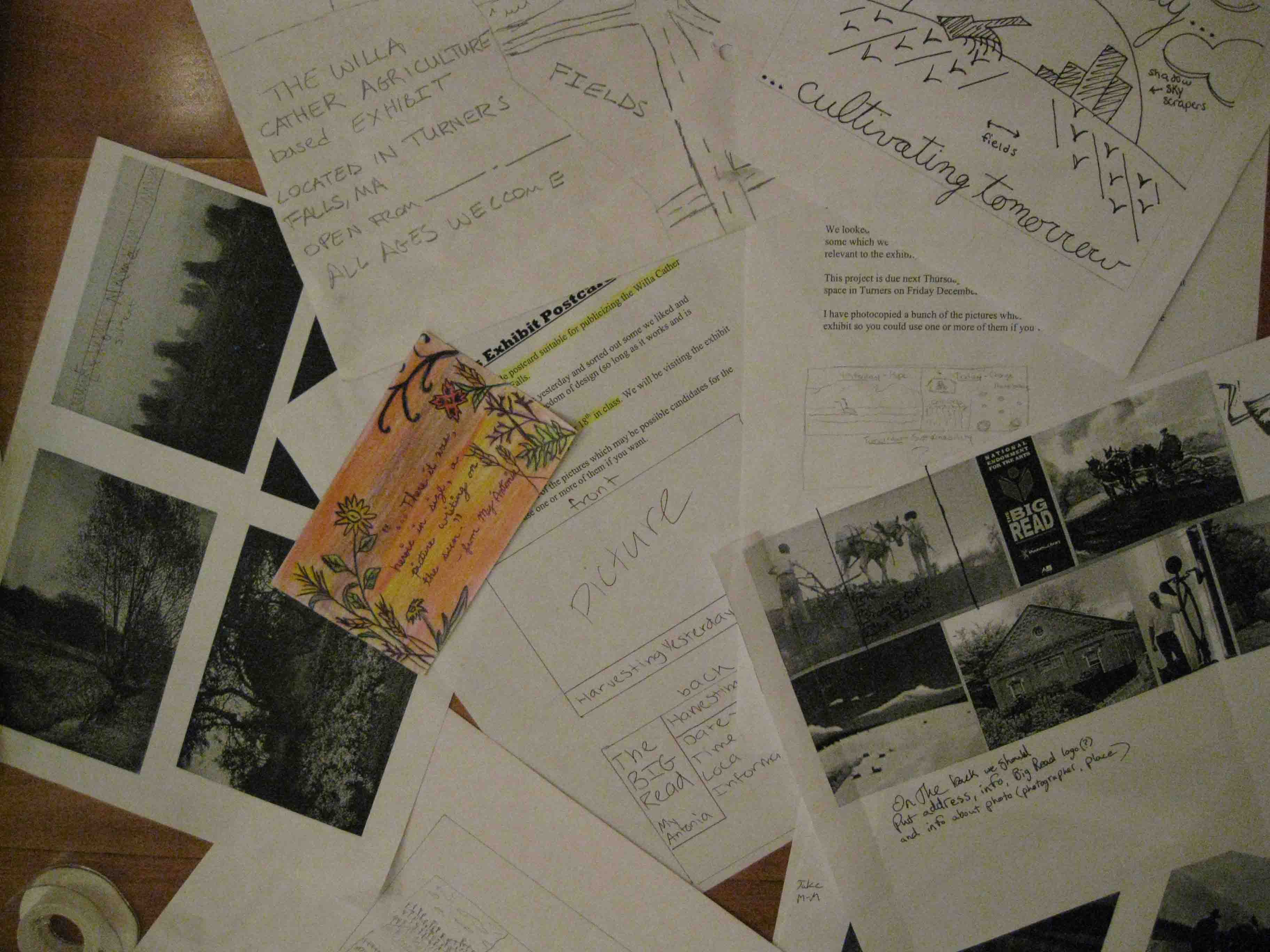
- Day 10:
(one long block)Team returns to off-site venue. Meets with that staff to share exhibit proposal and explore potential problems and limitations with use of the space. Community Reception date is chosen. Museum staff brings postcard/invite mock-up based on the class input for feedback and approval. The plan is in place!
-
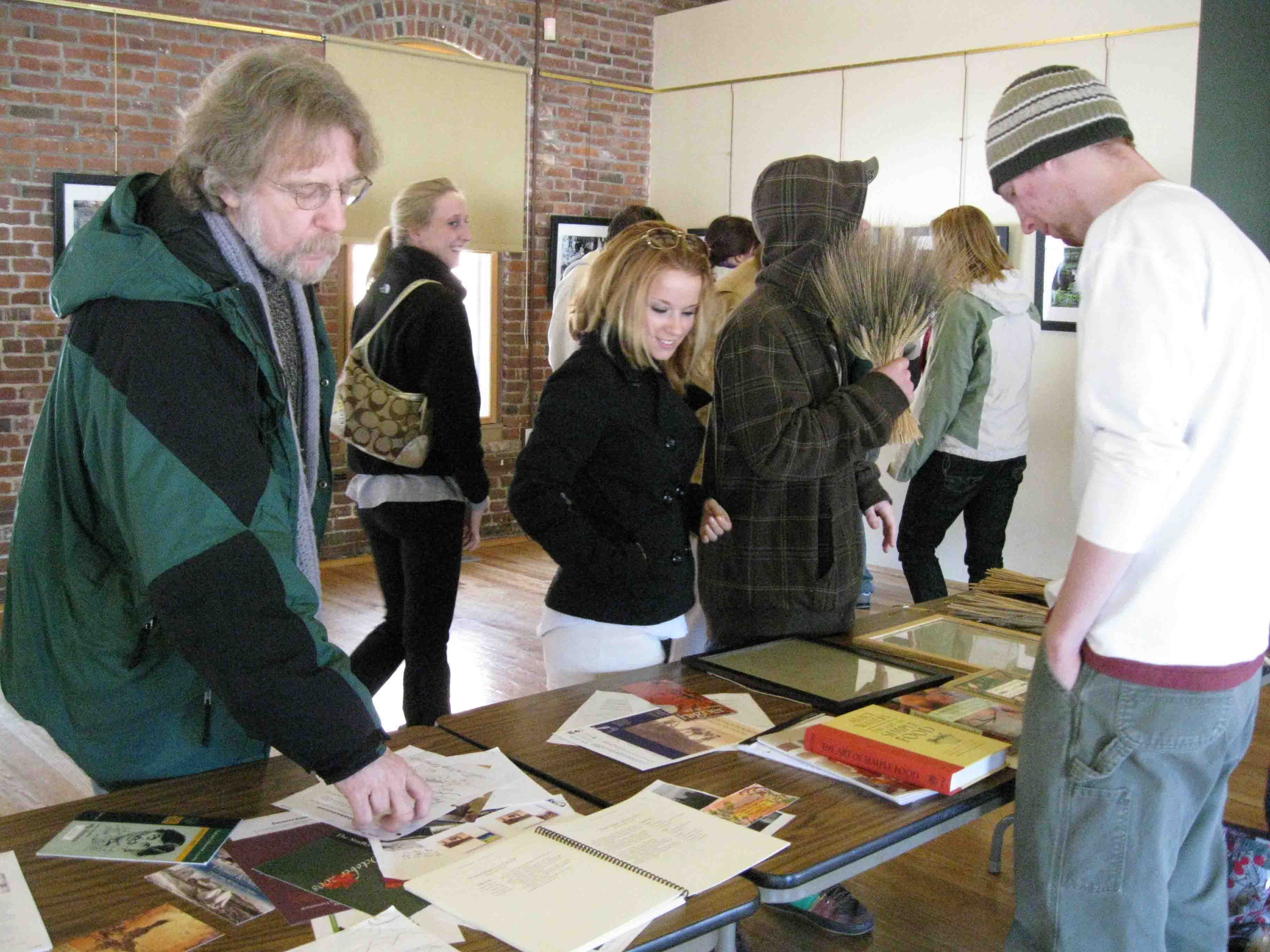
View/Download File: /project18_0566/flyer_742.pdf - Continued meetingsDepending on the time available, students may continue to be involved in the exhibition development through: object choices, label writing, publicity, making interactives and helping with the installation. This is accomplished through a back and forth process between students, teacher and museum staff: solicit youth ideas, the museum staff returns with drafts and proposals, students suggest revisions, and come to final concensus. As the work of the Curatorial Team ends, a second team, the Installation Team, may be recruited, opening the work up to students in other classes.
-
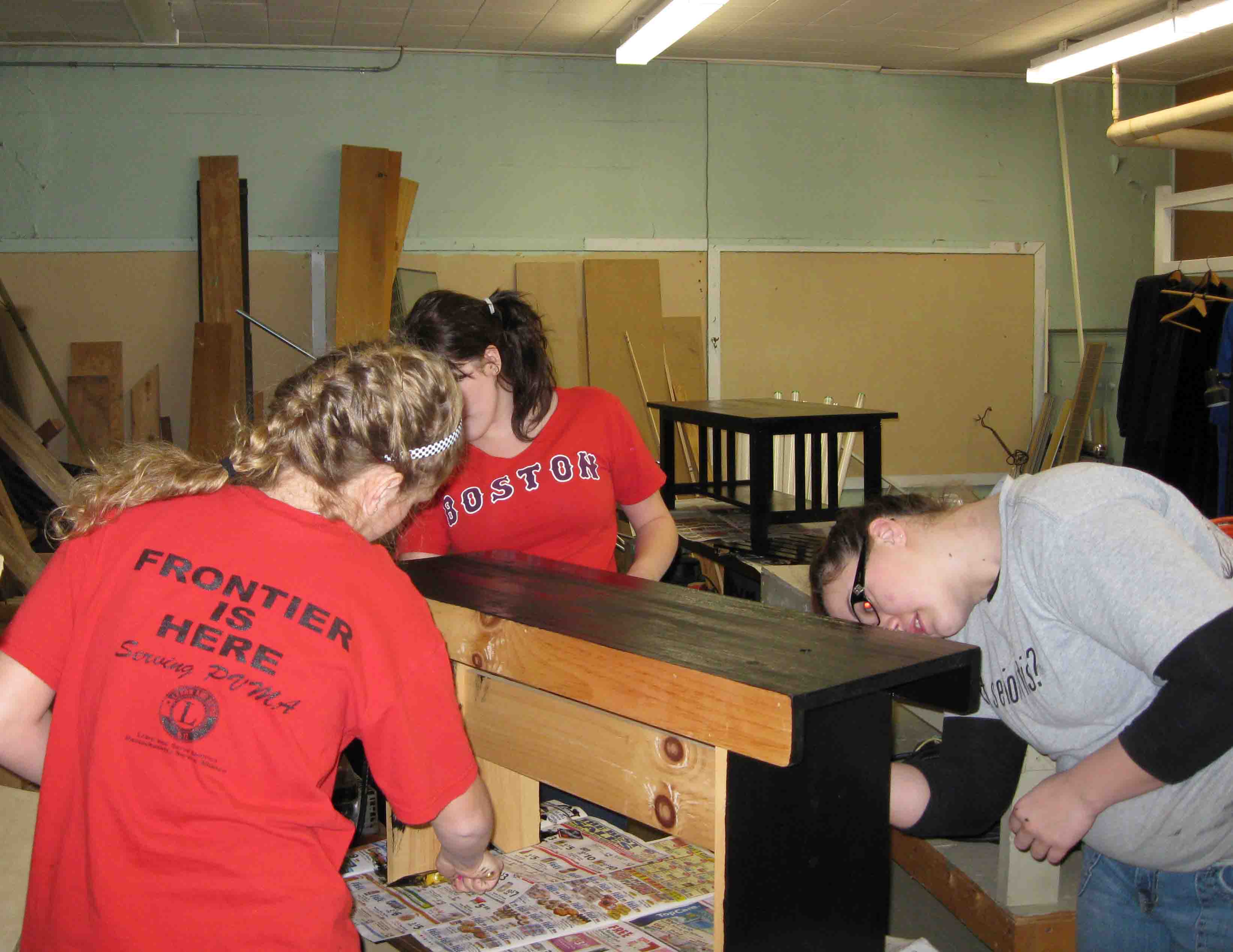 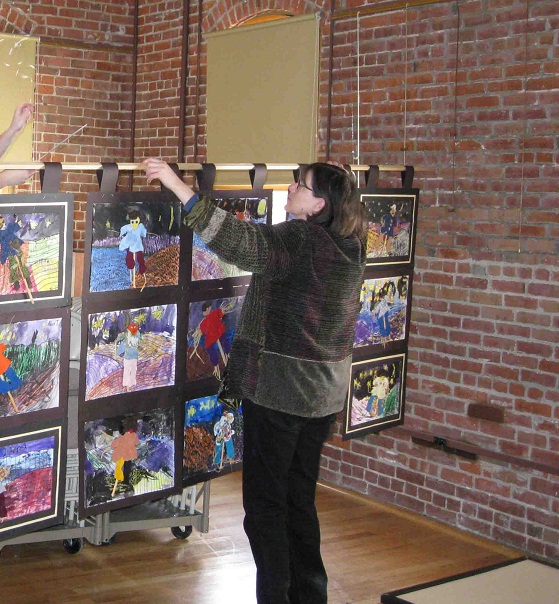 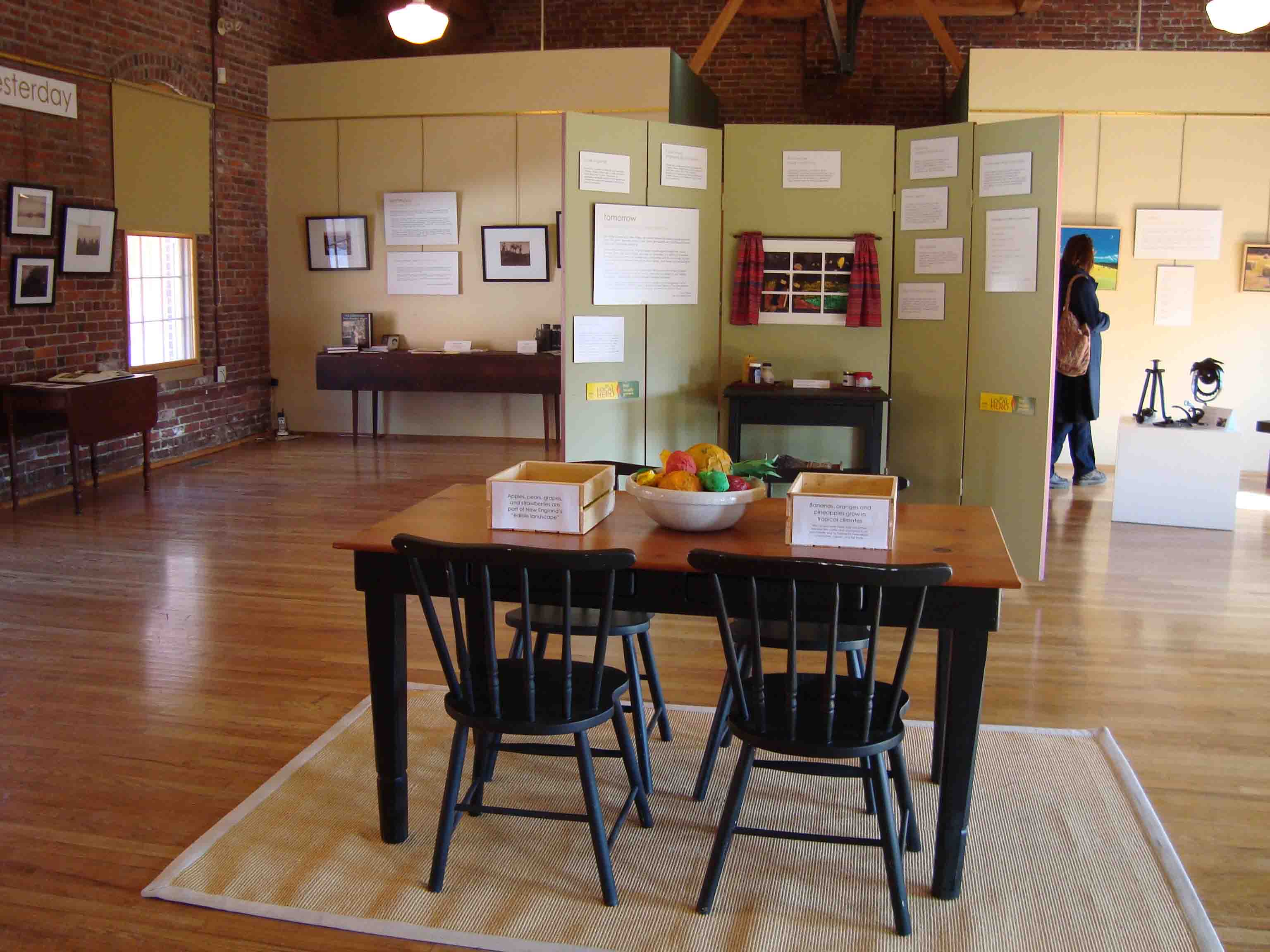
View/Download File: /project18_0566/press release low res for web.pdf - Community Reception and ReflectionStudents are invited to participate in planning, hosting and attending a community reception, seeing firsthand the fruits of their labor and the value of their work as perceived by the public. The team is invited to reflect on their experience. In our case, students also shared their experiencee with educators and other students at an annual statewide Community Service Learning conference.
-
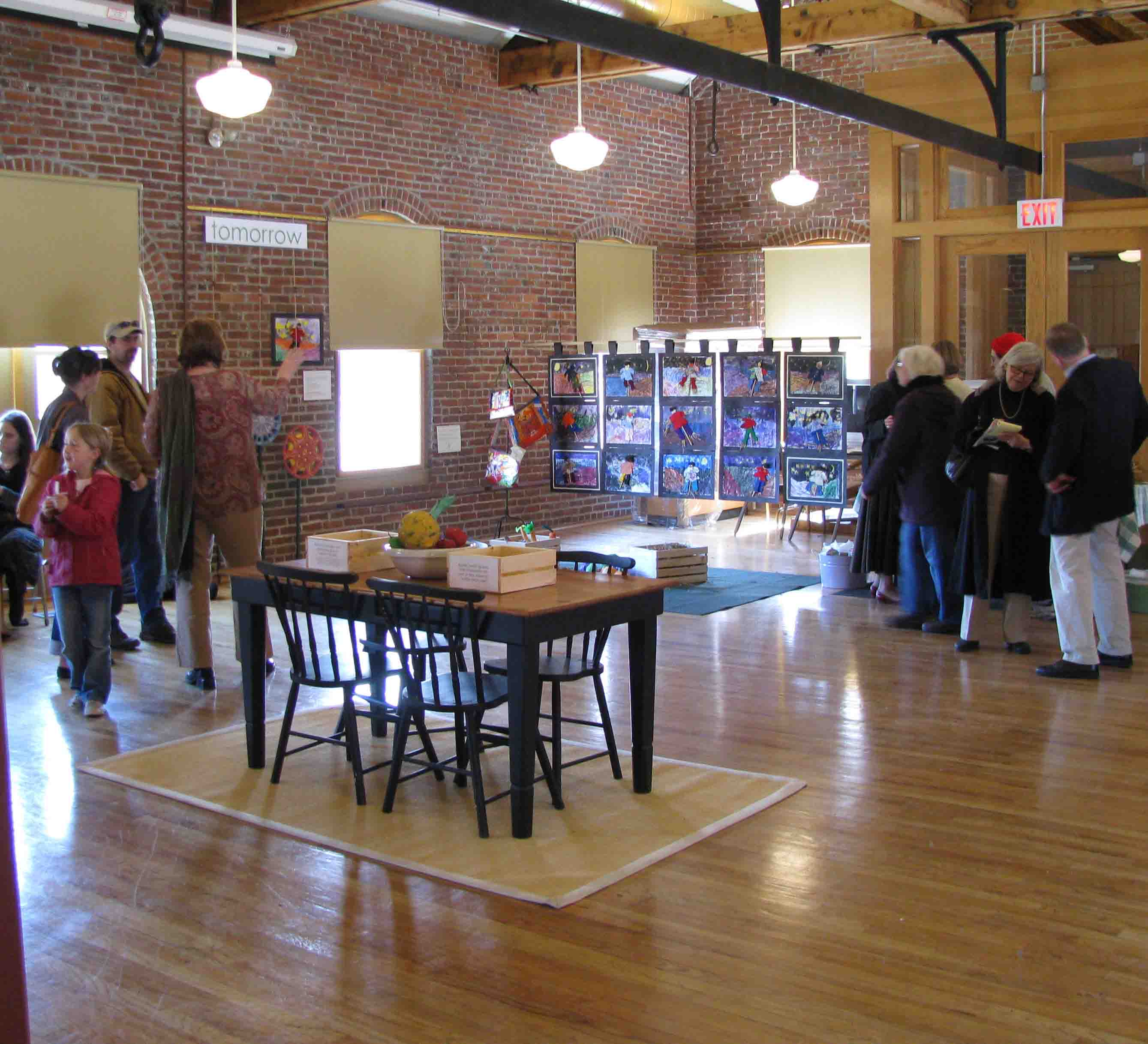 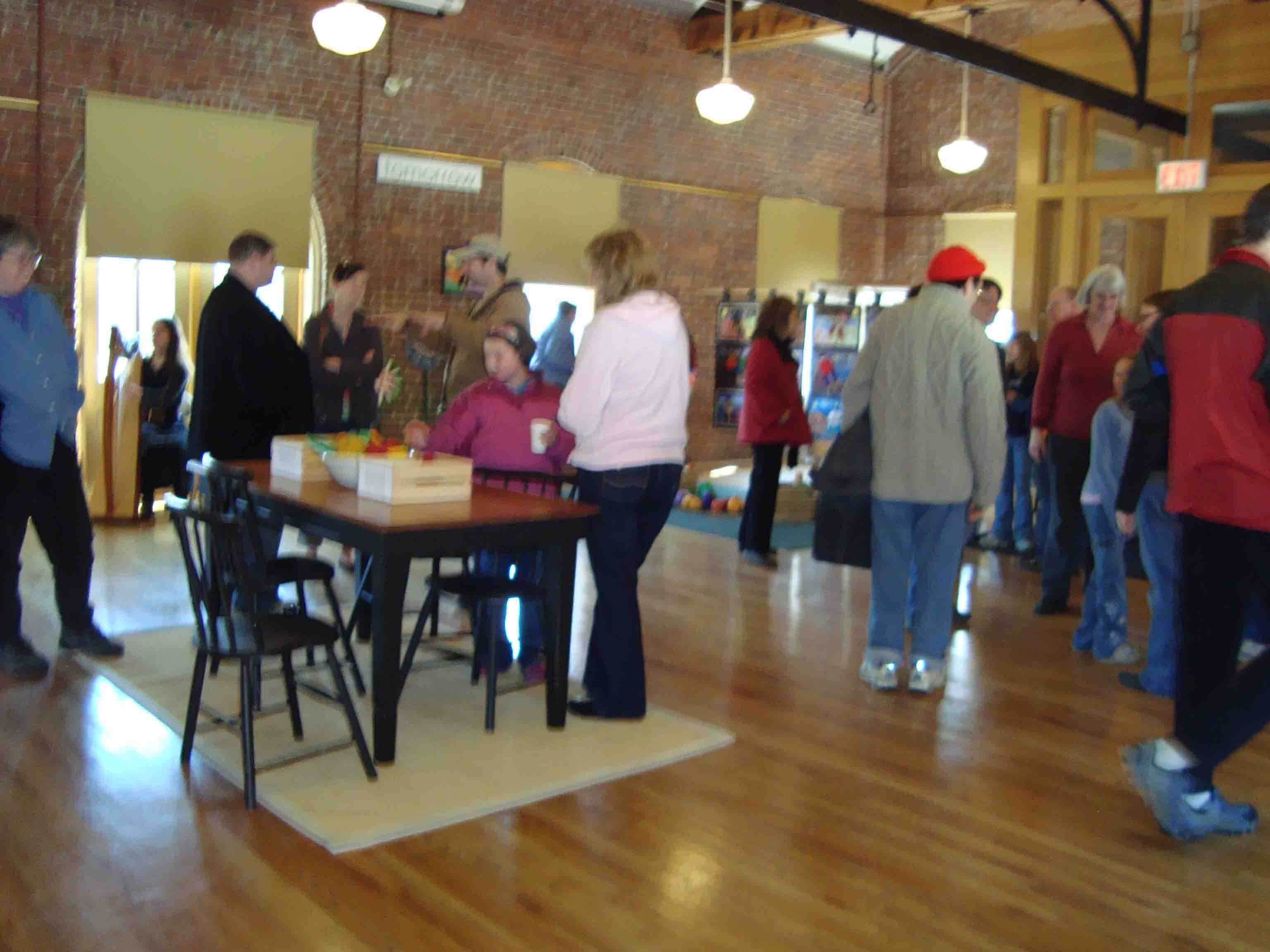 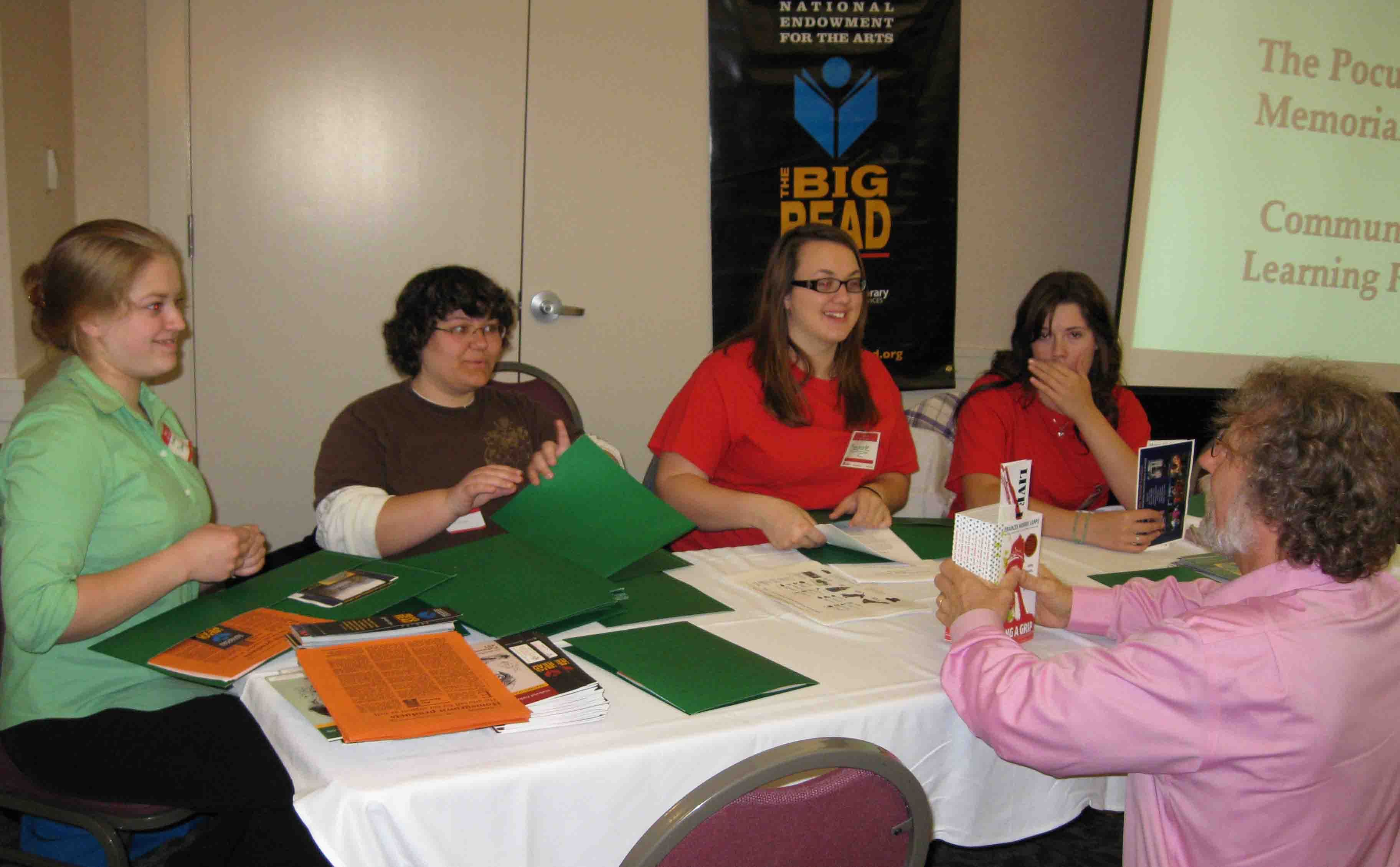
Instructional Techniques - Project-based LearningIn a collaborative project, students and a museum co-curate an exhibit in a public building on a topic of community concern
- Group/Partner WorkWith the museum partner, students contribute to all phases of exhibit planning, design, and implementation
- Hands-on ExposureStudents design exhibit layout and help install exhibit
- Informational WritingStudents compose/edit museum labels
Assessment Techniques- Collaboration with ClientUngraded formative assessment throughout the project
- Client and Public SatisfactionMuseum and the public acknowledge invaluable contribution of student perspective on topic of community concern
Tags = museum | civic-literacy | universal-design | creativity/innovation | Subject = ELA, History, Service_Learning, Other: According to choice | Grade Level = HS | Time Period = | Program/Funding = 354 |
Direct website link to this project: http://ContextualLearningPortal.org/contextual.asp?projectnumber=18.0566
|












